

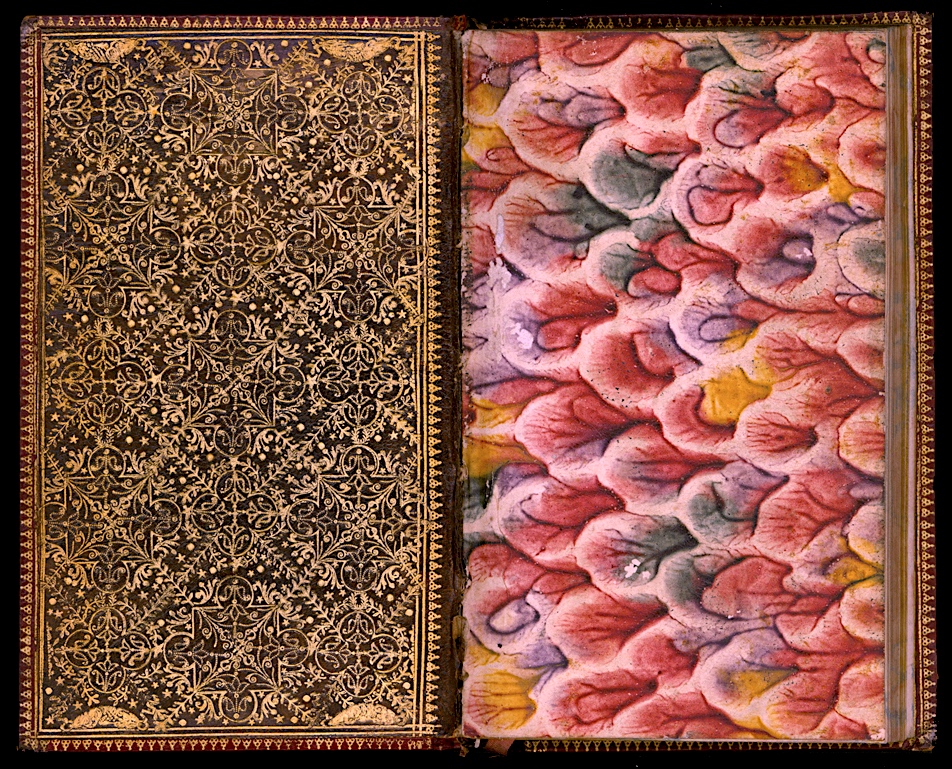
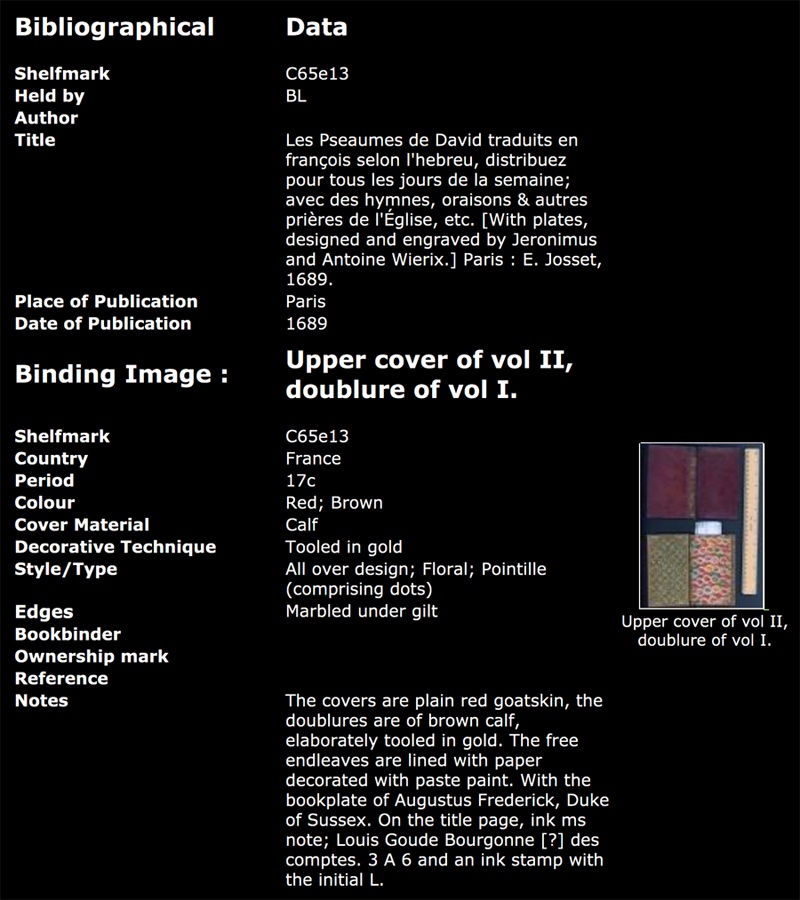
| The all over design doublure shown above is found in the British Library Database of Bookbindings, shelfmarked C65e13. I must thank the British Library for allowing me to show this rare Boyet Jensenist binding, below is a definition of this from the Princton University Graphic Arts website (click here to see it). |
| "The term Jansenist binding is an allusion to the Jansenists, a Christian theological movement that emphasized original sin, human depravity, and the necessity of divine grace, originating from the writings of theologian Cornelius Otto Jansen (1585-1638). "In the reign of Louis XIV, also, by sheer reaction against the leaden showiness of the fashion set by the king, that there arose the simple style of binding called after Jansen, and adopted by the sect of Port Royal. The Jansenists bound their books soberly, with no gilding whatsoever on the sides, relying on the simple beauty of the leather in which their volumes were clad and decorating only the inside border, the dentelle, as it was called, from its resemblance to delicate lacework. These under decorated books were better bound in a technical sense than those of an earlier day." |
| The outside of this binding is the typical no frills affair (click here to see it at the British Library), however Boyet took the decoration inside to a whole new level, going from a simple dentelle to a full blown all over design, naturally this became the ultimate in Jansenist bindings. |
| I want to show here some additional imprints that are maybe unique to this particular doublure, they are not seen in the 'plein or' examples presented by Isabelle de Conihout et P. Ract-Madoux, Reliures françaises du XVIIe siècle, chefs-d'oeuvre du Musée Condé 2002, pages 96 to 99. these new imprints are found in inside of a lab-14-2 enclosure. |
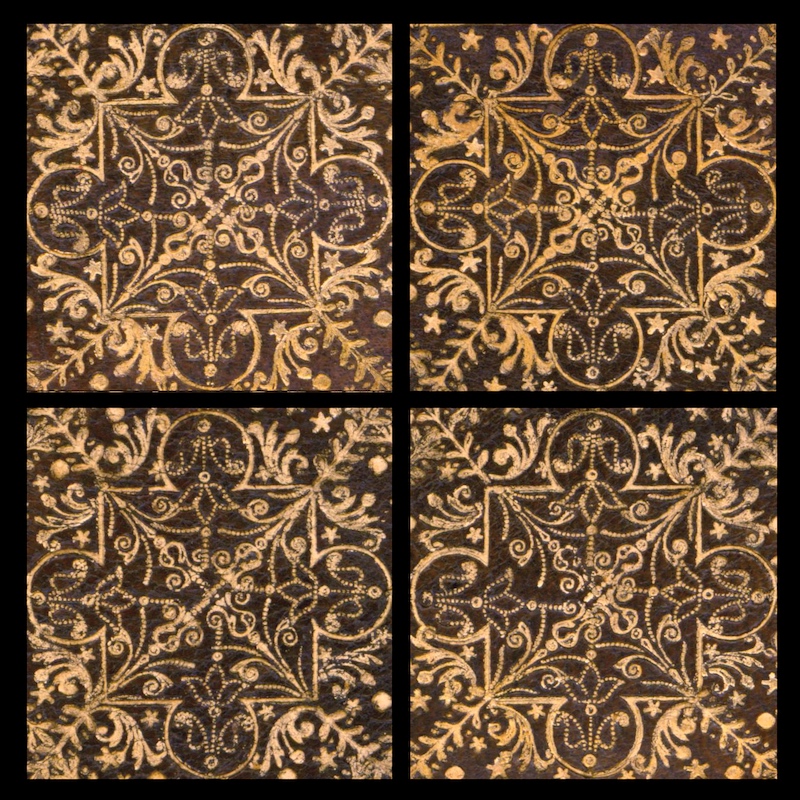
| In Comparative Diagram 1, we see four panels that contain the new imprint, a careful examination of all the examples indicates that there is not one clear unblemished example in the lot, the only way to get a representative type model is to reconstruct this imprint with various clean parts, cut and pasted together. |

| In Comparative Diagram 2, I show various stages of this reconstruction work, if you are a perfectionist this job can take hours, and you are never really satisfied, its always a sort of compromise within the limit of a few pixels. However rest assured if you ever see another one of these fleurons you will be able to identify it. |
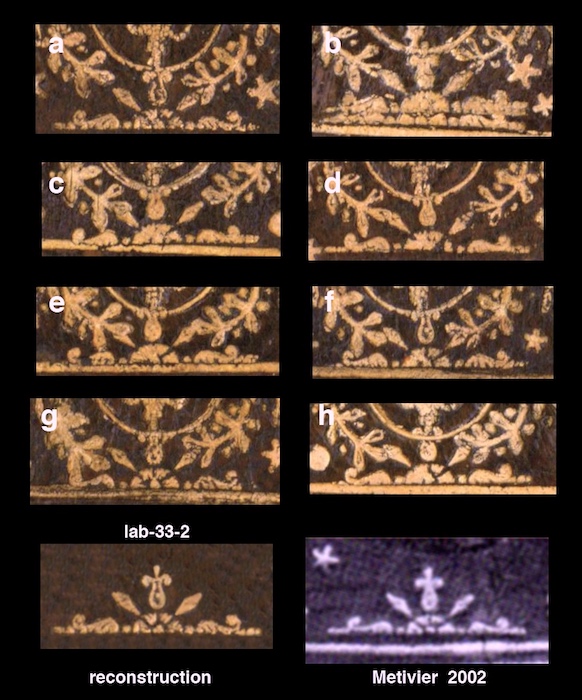
| In Comparative Diagram 3, we see another reconstruction, all the examples on the C65e13 binding are imperfect, and we have tried to show what the original must have looked like. Metivier provided an example, however we can see in our reconstruction certain details that are not present in Metivier's model. Without giving these imprints a catalogue name it is very difficult to make a reference to a particular fleuron in Metiviers diagrams. This is where Comparative Implementology, and the Comparative Impementologist has an important role to play, the long overdue classification and cataloging of the bookbinder's decorative tools is still in its earliest formation. For hundreds of years men have been grappling with the daunting task of identifying bookbinders by the decoration of the bindings. Raphael Esmerian was one of the first to seriously tackle this problem in the the early 70's of the last century, and yet even this concerted effort produced nothing other than illustrations without assigned numbers or names to the individual imprints but rather only just assigning collections of illustrated imprints to specific binders. Thus the study of bookbinders decorative tools has remained one of the most limited and understudied areas of research known to science. Imagine the delema of scientists if they could not name all the butterflies on the planet. of course some will remain undiscovered, but we can be sure that 90% of all butterflies have been named and classified... in contrast 90% of the tools used by bookbinders remain unclassified. If you want to discuss the evolution of fleuron design over the past 3 centuries, you will be hard pressed to do it when none of the tools have names or numbers. |
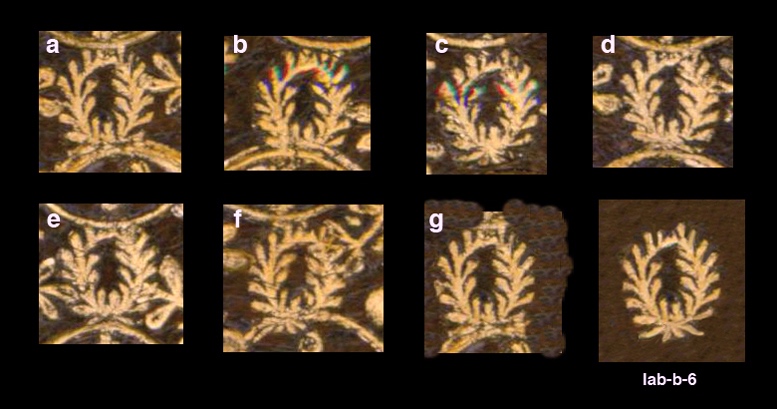
| In Comparative Diagram 4, we see a tiny wreath like imprint, this is actually a miniture idea of something like the wreath I show below, found on a c.1595 binding. Again the detail is hard to define exactly. However this fleuron is easy to spot, just look for the 8 legged monster that lurks inside. |
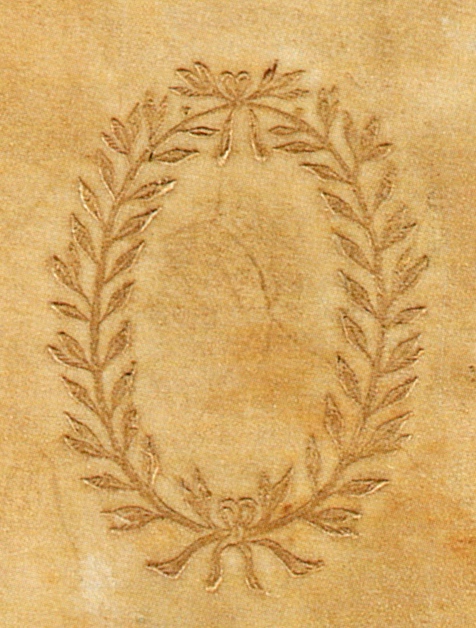
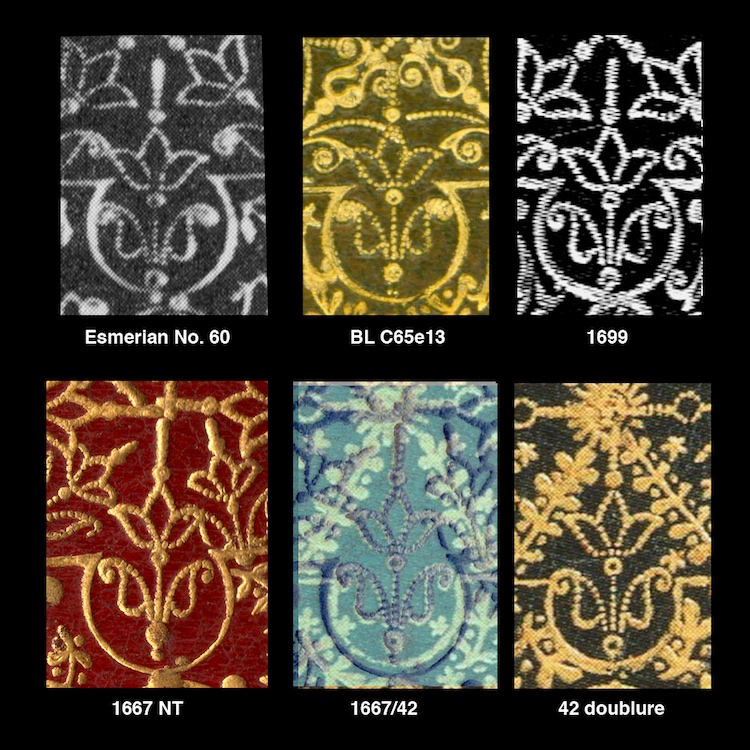
| While there are a few items of decoration in the C65e13 that do not match up with things found in other all over design decorations by Boyet, the lab-1d fleuron is definitely found in many and often placed inside the lab 14-2 frame work as shown below on Comparative Diagram 6 and 7 where the ovelay diagram shows that the lab-14-2 enclosure is in all cases, the same. |
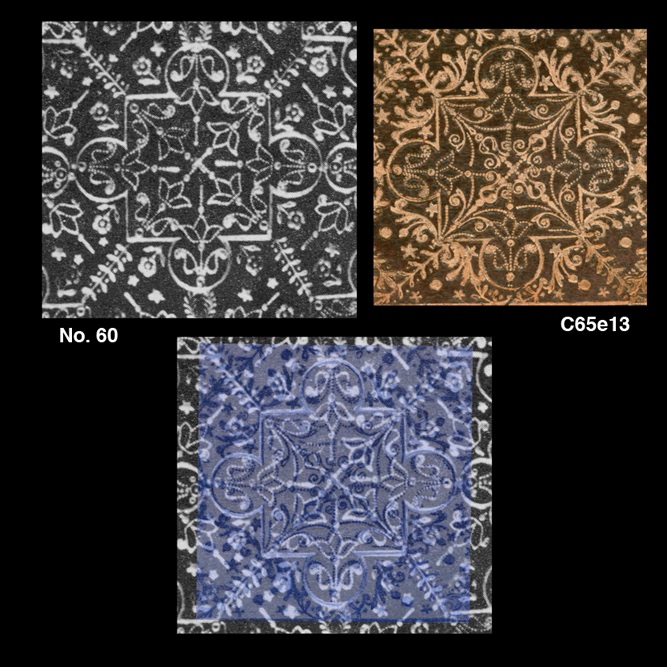
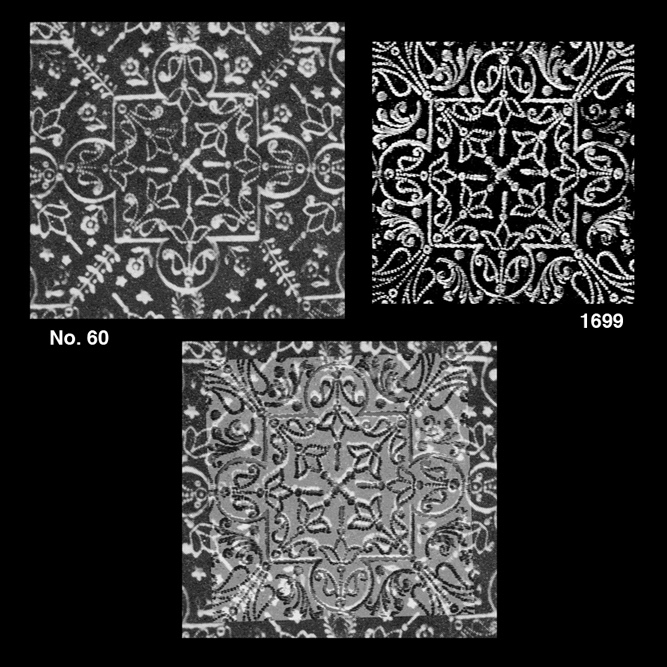
|
click here to return to the HOME page. click here to see an INDEX of the 2017 pages. see below links to previous work |
| Even experts are sometimes wrong, before you spend thousands on a book, please do your own research! Just because I say a certain binding can be attributed to le Maitre isn't any kind of guarantee, don't take my word for it, go a step further and get your own proof. In these pages I have provided you with a way of doing just that. |
| Virtual Bookings, created by L. A. Miller | return to the Home page of VIRTUAL BOOKBINDINGS |